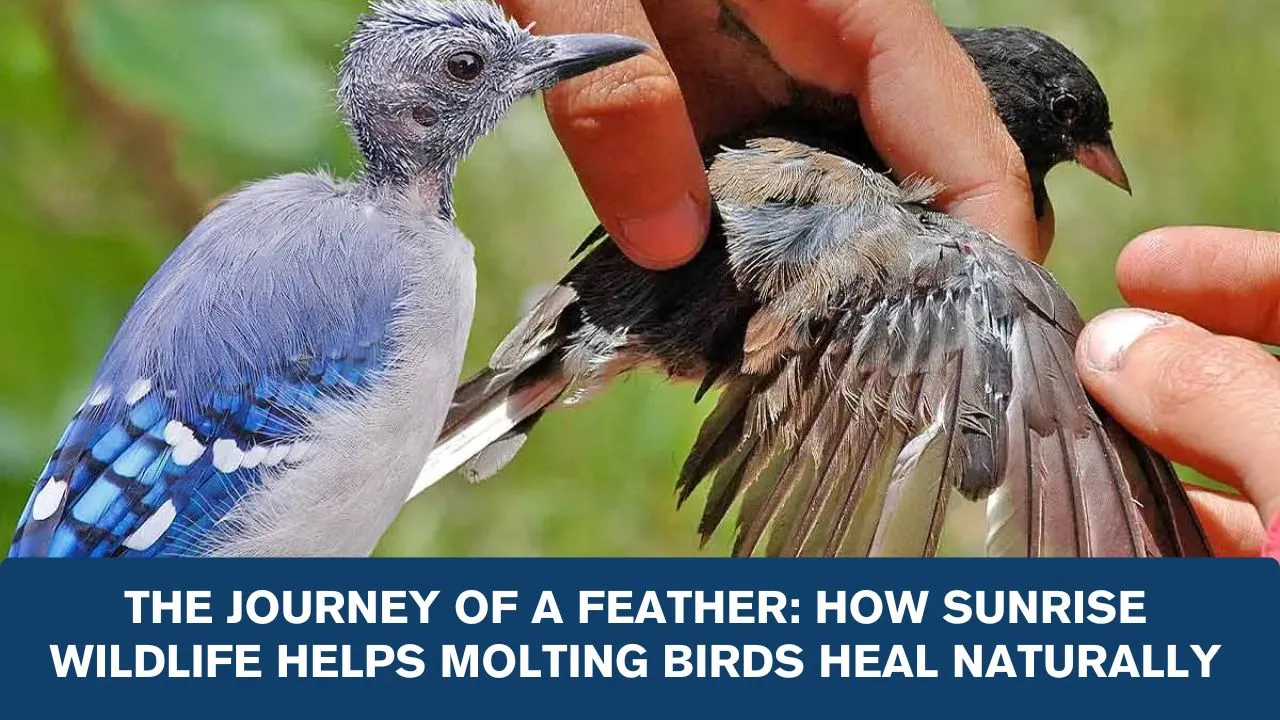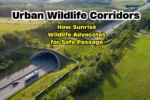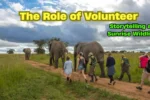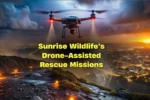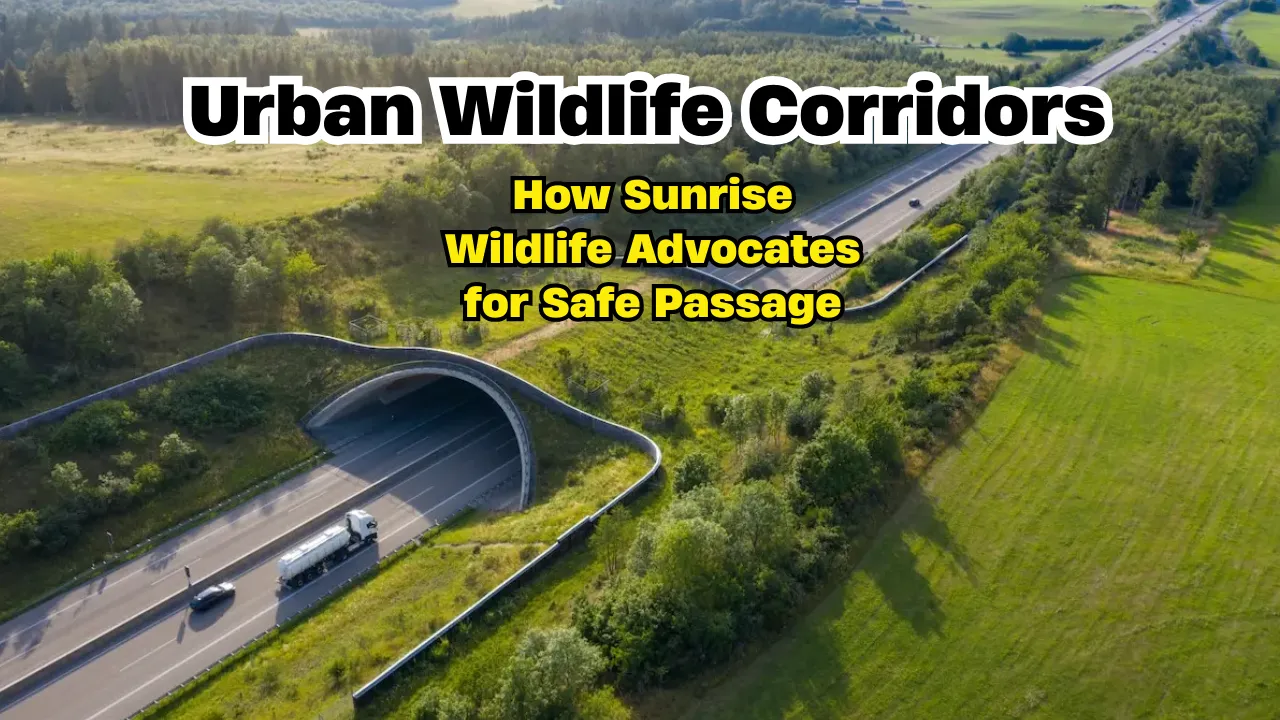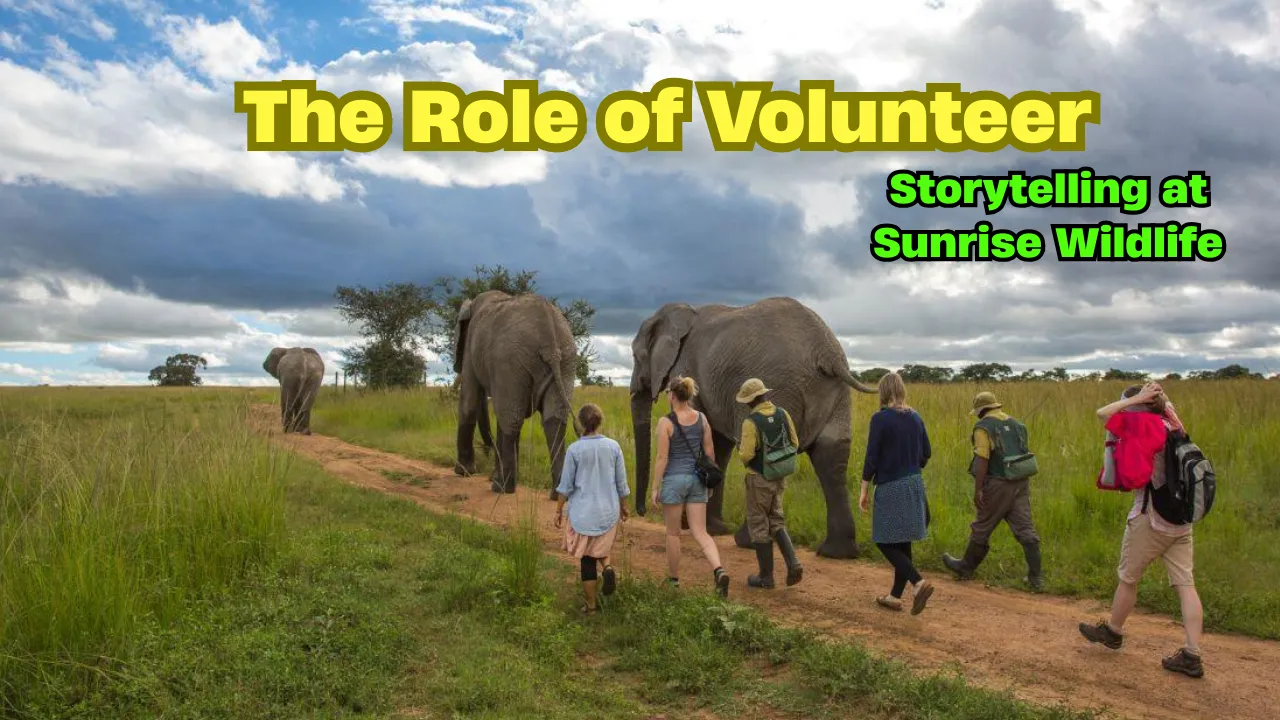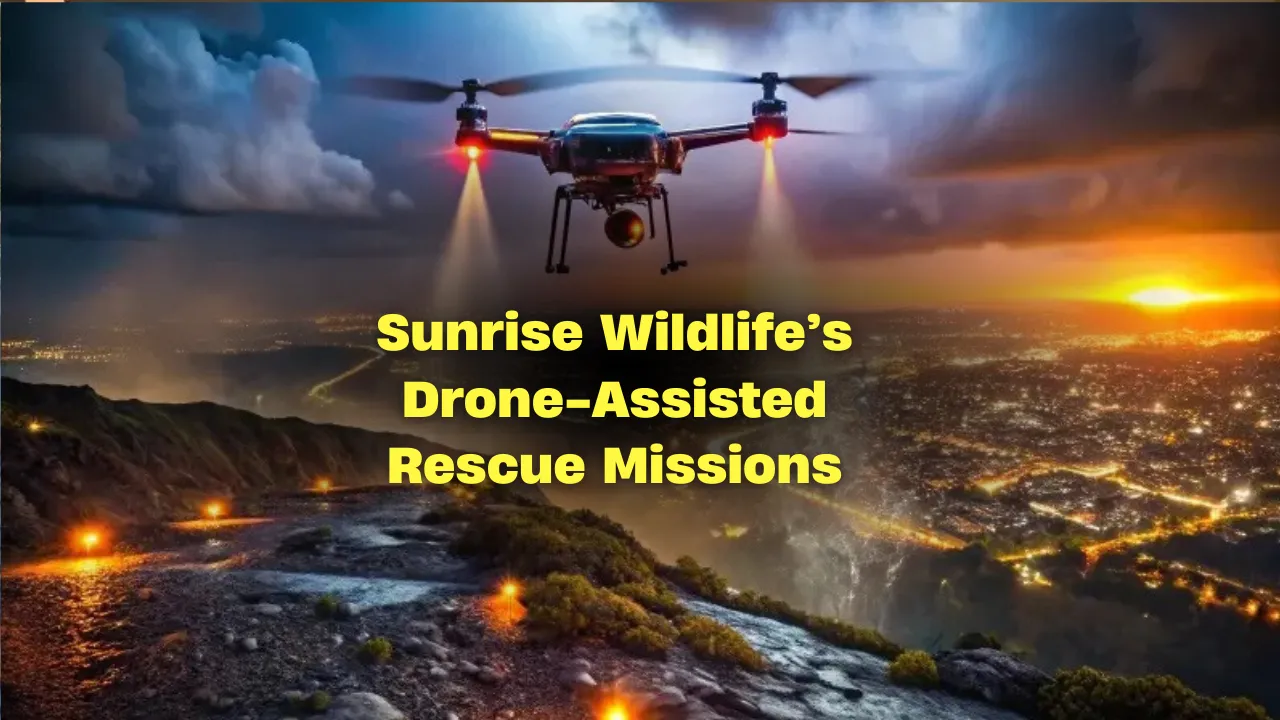Molting birds: Molting birds experience one of the most vital and challenging phases in their life cycle—a process that often goes unseen by the public eye. As birds shed their old feathers and develop new ones, they face physical exhaustion, reduced mobility, and vulnerability. It’s a natural yet demanding journey that affects their ability to fly, regulate temperature, and defend themselves from predators.
This article takes you inside the unique and thoughtful approach of Sunrise Wildlife, an organization committed to the holistic care of birds in this delicate state. We’ll uncover how their natural healing methods not only support the feather regrowth process but also help birds rebuild strength, regain confidence, and return to the wild on their own terms. Expect a clear guide on how molting works, why specialized care is crucial, and how Sunrise is changing the way we think about bird rehabilitation.
Molting Birds: A Natural Cycle Needing Human Understanding
The process of molting birds involves the shedding and regrowth of feathers, which happens seasonally or during major life changes like breeding or migration. Though natural, this phase is incredibly taxing on birds’ bodies. They become less agile, more exposed to predators, and can even appear sickly. Sunrise Wildlife recognizes that molting isn’t an illness—it’s a healing transformation. By creating quiet, enriched environments and tailoring diets to support feather development, they ensure each bird moves through its molt safely. This crucial support helps them regain full flight capabilities and reintegrate into their natural habitats without disruption.
Understanding Molting in Birds
Feathers don’t last forever. For birds, molting is an essential biological process that replaces worn-out feathers with fresh, functional ones. Most birds undergo a seasonal molt, often linked with breeding or migration timing. During this phase, their energy is directed away from active flying and into feather regeneration.
At Sunrise Wildlife, caregivers use their deep understanding of avian health and behavior to support this process. By reducing external stressors and observing birds from a distance, they allow nature to lead the way. This method contrasts with traditional rehabilitation, where unnecessary interference can delay or disrupt molting.
Why Molting Birds Need Extra Care
While molting may look simple from the outside, it’s a period of intense vulnerability. Birds often appear lethargic, patchy, or grounded—not because they are sick, but because their flight feathers are still forming. In the wild, this can make them easy targets for predators, especially domestic cats or large birds of prey.
Sunrise Wildlife addresses this vulnerability by offering a safe and quiet sanctuary. Specialized enclosures replicate natural habitats while protecting birds from threats. These spaces offer shaded perches, calm surroundings, and the opportunity for rest and movement without risk. Wildlife rescue centers like Sunrise understand that a molting bird is not one to fix but one to protect until nature finishes its work.
The Role of Sunrise Wildlife in Natural Healing
Sunrise Wildlife emphasizes a philosophy of natural healing. Their role isn’t to fix every bird immediately but to guide them through their body’s own recovery process. That means no aggressive medical treatments unless necessary, no excessive handling, and no artificial environments that could disrupt molting.
Instead, they create a recovery experience that mirrors the bird’s native ecosystem. Diets are enriched with protein and essential nutrients that support feather regrowth, including insects, seeds, or small mammals depending on the species. Caregivers monitor molting patterns using species-specific calendars and adjust support accordingly.
This patient, bird-centered approach results in better long-term outcomes. Birds return to the wild not only fully feathered but mentally and physically prepared to thrive.
Steps Sunrise Wildlife Takes to Help Molting Birds
- Intake and Assessment
Birds arriving at Sunrise are gently examined for injuries, stress, and molt stage. A tailored recovery plan is created. - Diet and Hydration
Nutritional needs are met with protein-rich meals and hydration boosts that encourage healthy feather development. - Minimized Handling
Limiting human contact allows birds to remain calm, reducing stress hormones that might delay molting. - Safe Environment
Each enclosure provides natural perches, limited noise, and safe sunlight exposure to simulate a wild setting. - Feather Monitoring
Weekly checks track feather health, regrowth symmetry, and overall mobility, preparing birds for release when ready.
Two Key Healing Practices at Sunrise Wildlife
- Natural Sunlight Exposure
Birds spend time outdoors in protected enclosures where they receive sunlight critical for vitamin D production and feather health. The exposure improves their immune function and helps synchronize their internal molting cycles. - Species-Specific Molting Calendars
Every bird species has a unique molting timeline. Sunrise Wildlife maintains detailed records to ensure care is appropriately timed. For example, hawks may molt in summer while songbirds molt post-breeding. This insight ensures birds are not disturbed during sensitive stages.
Benefits of Natural Healing for Molting Birds
Supporting birds through a natural molt has measurable benefits. Instead of rushing feather growth, the body is allowed to replace each feather in its correct order, which is critical for flight balance and waterproofing in species like ducks. Bird rehabilitation efforts that mimic wild conditions also help maintain natural behaviors like perching, foraging, and grooming.
Sunrise Wildlife’s non-invasive strategy reduces the risk of feather damage or behavior regression. Molting birds can maintain their instincts and are better prepared to resume life in the wild. This hands-off approach also reduces the risk of imprinting, which is essential for birds of prey and migratory species.
How the Public Can Help Molting Birds
Even if you’re not a wildlife expert, there are ways to support molting birds in your area:
- Do not interfere with grounded birds. They may be molting, not injured. Observe from a distance and call a wildlife center if unsure.
- Keep domestic pets indoors, especially during molting season when birds are most vulnerable.
- Avoid using pesticides and other chemicals that may harm birds or their food sources.
- Volunteer or donate to wildlife organizations that support rehabilitation and education.
- Share awareness about molting with neighbors and on social media to reduce misinformation.
FAQs
What is the molting process in birds?
Molting is when birds shed old feathers and grow new ones, usually once or twice a year depending on their species and health.
Why do molting birds look sick or injured?
They often appear ragged or grounded because they’re using energy to regrow feathers and can’t fly properly during the process.
How does Sunrise Wildlife help with molting?
They provide quiet, natural environments, proper nutrition, and minimal handling to support healthy feather regrowth.
Should I help a bird that seems grounded?
Not necessarily. It could be molting. Contact a local wildlife rescue before intervening.
Is molting dangerous for birds?
It’s not dangerous by itself, but it makes birds more vulnerable to predators, bad weather, and human interference.
Final Thought
The journey of a feather is more than a poetic idea—it’s a real, biological transformation that every bird must face. At Sunrise Wildlife, this journey is honored with care, patience, and respect for the bird’s natural rhythm. By allowing molting birds to heal without rushing or force, Sunrise sets a powerful example of what true wildlife rehabilitation can look like. It’s not about control—it’s about support.
If you want to be part of this compassionate mission, consider learning more about local wildlife, supporting a rescue organization, or simply observing nature with new eyes. Every feather tells a story, and it starts with understanding.
Explore more about how nature heals itself—start with your local birdwatching guide or connect with a wildlife center today.
